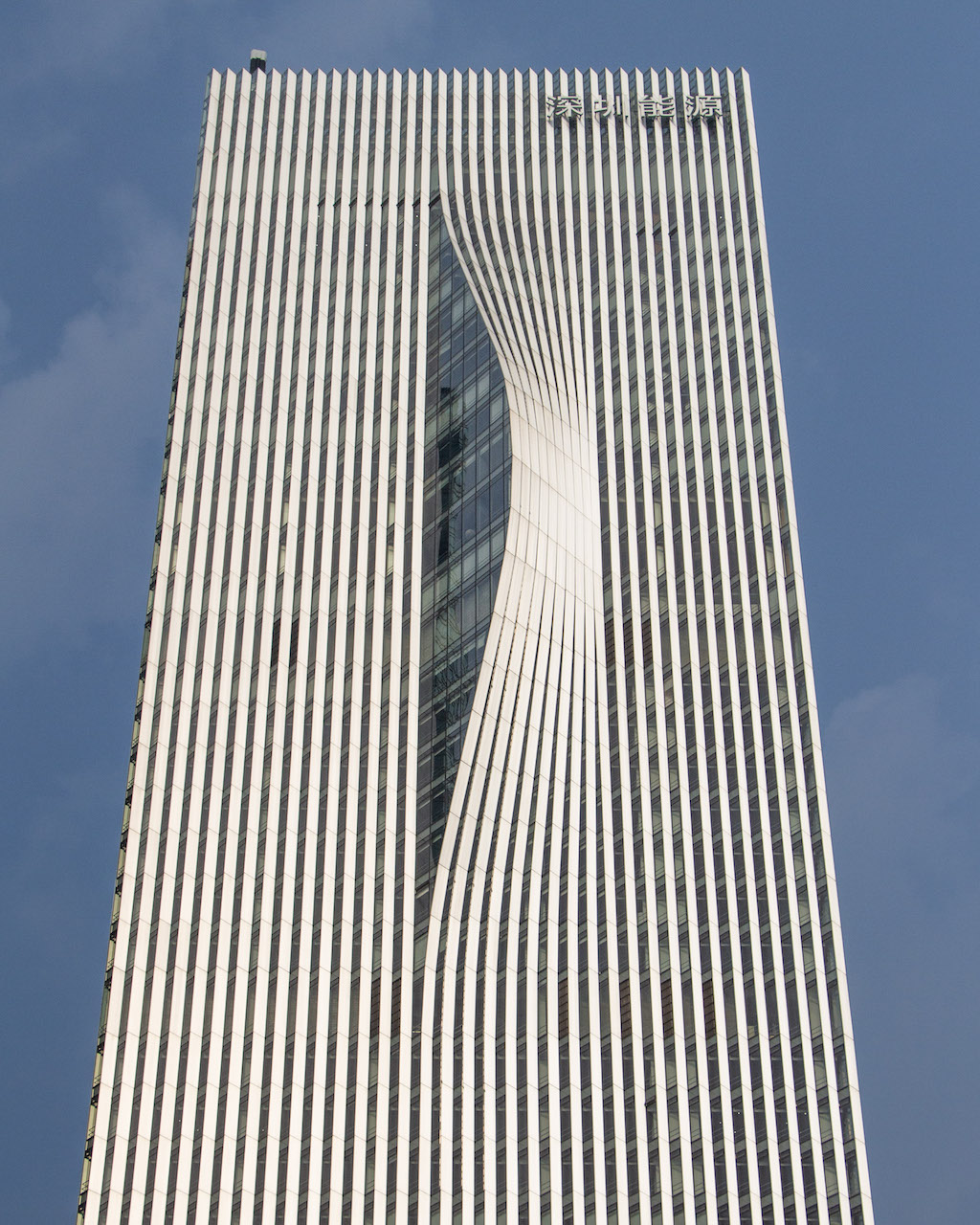
From an elevated treetop walkway above Shenzhen’s Xiangmi Park, the grounds below are an expanse of lush greens and rose beds, paved trails and wooden benches. There are creeks and small ponds, a large lychee orchard and blossoming fields sprouting vibrant flora. It’s a surprising sight in a city that’s better known for its tech and manufacturing industries than its green spaces.
The lofty walkway is part of a redevelopment project that was completed in July 2017 by international firms MLA+ and ZEN Associates. This densely forested area was once an agricultural research centre, but fell into decline as Shenzhen underwent dramatic expansion in the 1980s. In 2015, the local government called for a revitalisation scheme to improve much of the existing infrastructure while introducing new landscape design and structures that could serve educational, sustainable and recreational purposes.
The walkway also links to the Xiangmi Park Science Library, a lightweight steel and glass edifice nestled among the trees. Both the walkway and the library were designed with sustainable practices in mind – as was the rest of the park. The ponds collect and purify rainwater through aquatic plants that remove bacteria, absorb carbon dioxide and release oxygen; while every patch of grass predominantly relies on natural fertilisers and previously composted soil.
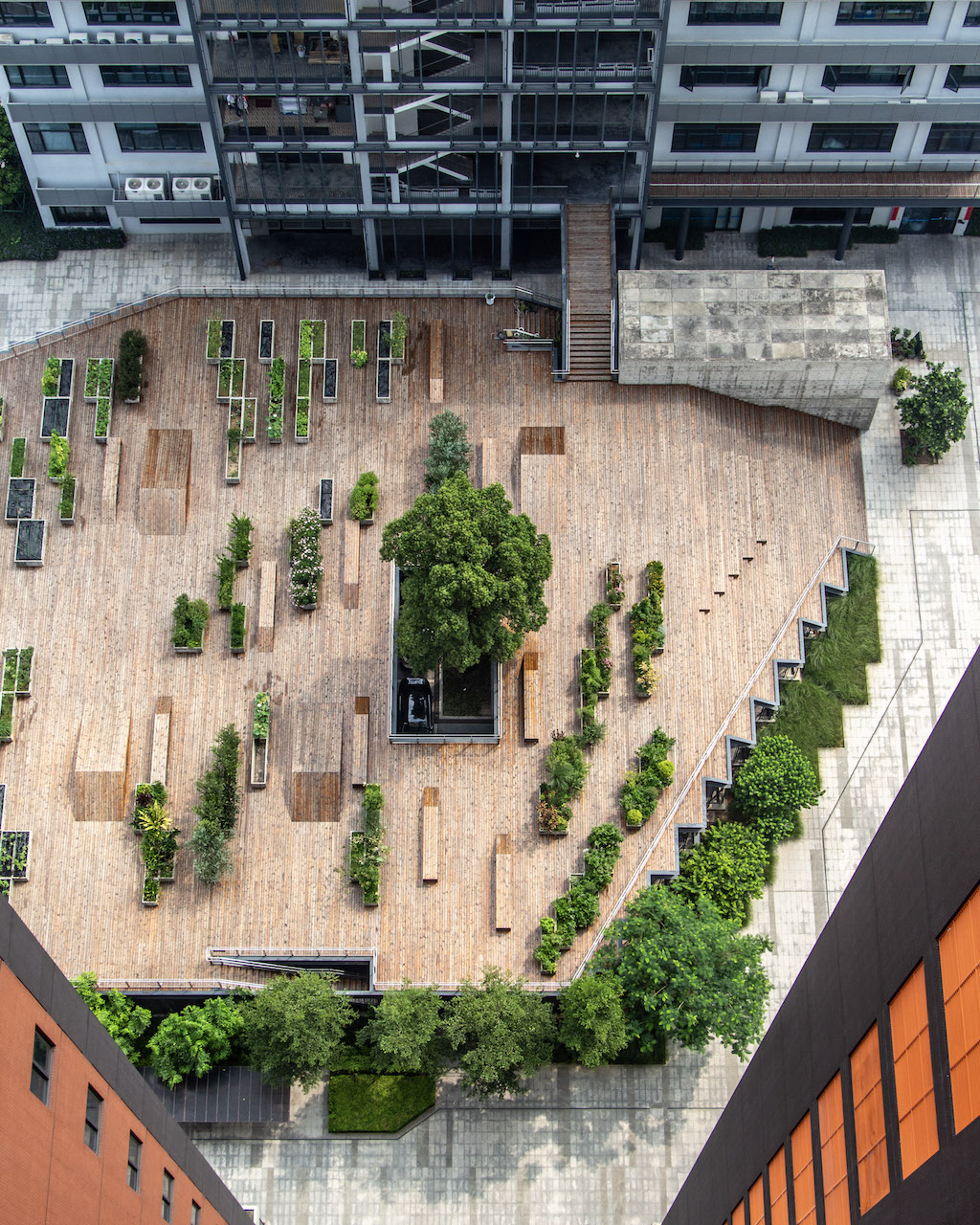
Across the Silicon Valley of China, as Shenzhen is sometimes called, an array of recent urban projects demonstrates similar efforts aimed at sustainability.
“Shenzhen is a laboratory for urbanism,” explains Anderson Lee, who is an architect, curator and professor at the University of Hong Kong’s Faculty of Architecture. “It has poised itself as a [blank] canvas to test building ideas, and experiment with design that’s aware of and responsive to its surroundings.”
The southern Chinese megacity has managed this, according to Lee, because of its young history. Before March 1979, when it was declared China’s first special economic zone and officially made a city, Shenzhen was an unremarkable settlement between Hong Kong and Guangzhou known as Bao’an County.
In the span of only four decades, the city has transformed into one of China’s most dynamic centres, and, thanks to a competitive real estate market and a formidable supply chain, the engine room of the country’s high-tech and green innovation industries. Its population has skyrocketed from some 20,000 in the 1970s to over 12 million as of 2017.
As it has grown, the city has also become the pioneering force behind the world’s largest continuously urbanised area, the Pearl River Delta – what’s now being called the Greater Bay Area. “That rags-to-riches arc has given it the chance to invent itself in ways most cities can’t,” Lee says.
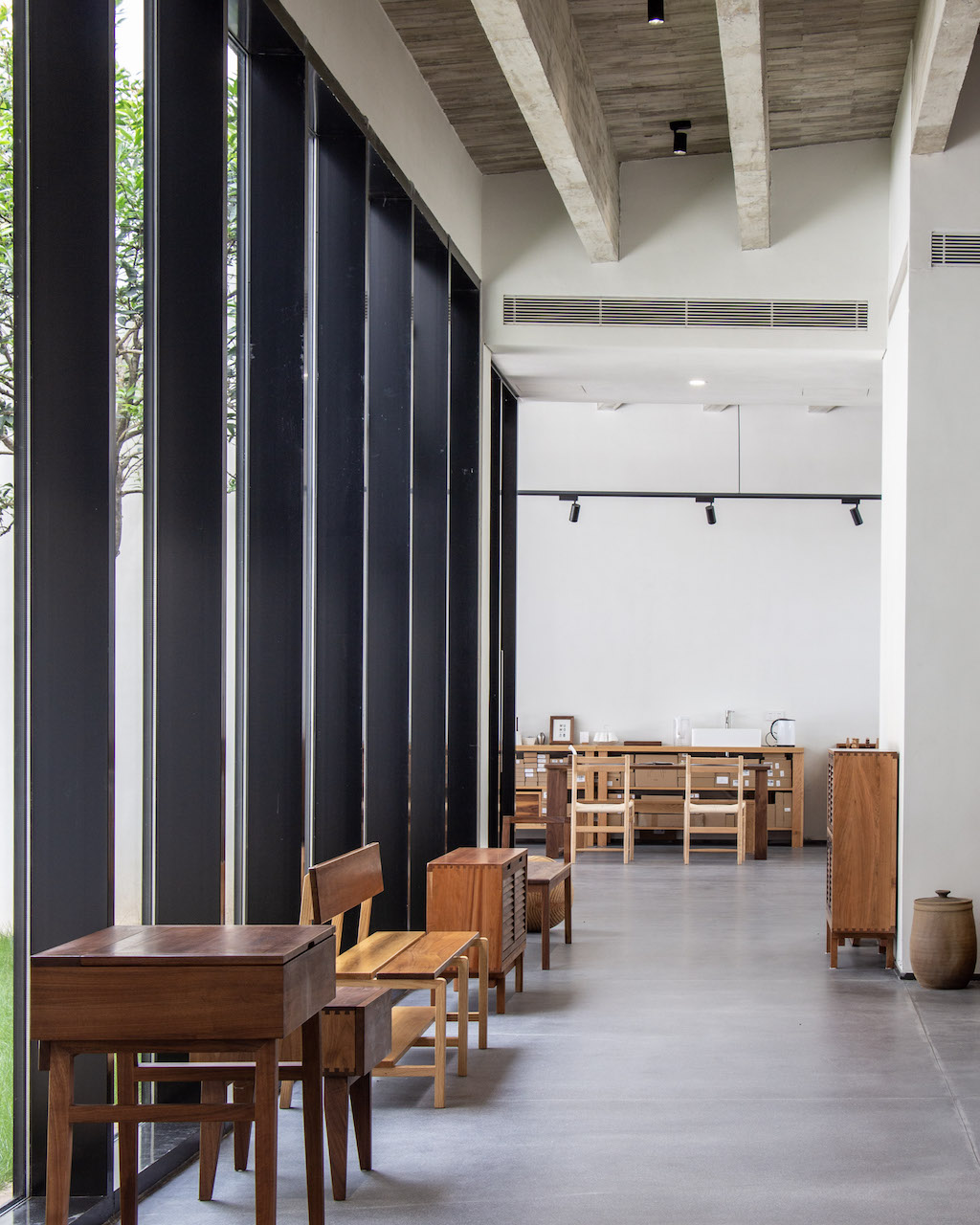
In the 1990s, that invention meant mostly breakneck growth and a massive influx of migrant labour, which resulted in land shortage and a predominantly industrial backdrop. Starting in the early 2000s, however, urban planners pressed pause and began rethinking the city. In March 2005, during the National People’s Congress and Chinese People’s Political Consultative Conference, Shenzhen’s then-mayor Li Hongzhong declared that the city’s “speed” was unsustainable, especially with the rapid depletion of land for urban construction and development. To create alternative land resources, they introduced new planning initiatives and technical measures to redevelop existing areas, and turn disused factory sites and aged commercial centres into spaces people would actually want to live in.
That same year, the inaugural Bi-City Biennale of Urbanism\ Architecture, run jointly with nearby Hong Kong, was launched to further the discussion on “clever urbanisation”.
Shenzhen’s sustainability efforts touch all aspects of the city – including its transportation system. The metropolis was the first in the world to make almost all of its taxis and buses electric last year, in a move to reduce noise pollution and cut an estimated 48% of carbon dioxide emissions.
Over the last three years, 60,000 electric light trucks and vans have also replaced diesel-fuel vehicles for urban freight movement, accounting for about 35% of the city’s urban delivery fleet.
Following on from this, international conferences on sustainability then started taking place almost annually. The goal: turn Shenzhen into a low-carbon smart city and build environmentally aware districts, buildings and complexes that would place people (instead of mega developments) at the forefront of their planning, and foster a “human scale” perspective on architecture – one centred on human well-being.
The design community has fully embraced that proposition, transforming Shenzhen into a playground of sorts for world-class smart landmark buildings. The Vanke Center, a 2009 mixed-used building by New York-based Steven Holl Architects in the business district of Futian, is one of the earliest examples. Designed as a “horizontal skyscraper” that appears to be floating over a tropical garden, it was China’s first LEED-NC Platinum-certified commercial project. This is a certification administered by the US Green Building Council to assess building performance and sustainability goals. The Vanke Center redefined the use of public space, with most of its premises reconfigured as an open landscape.
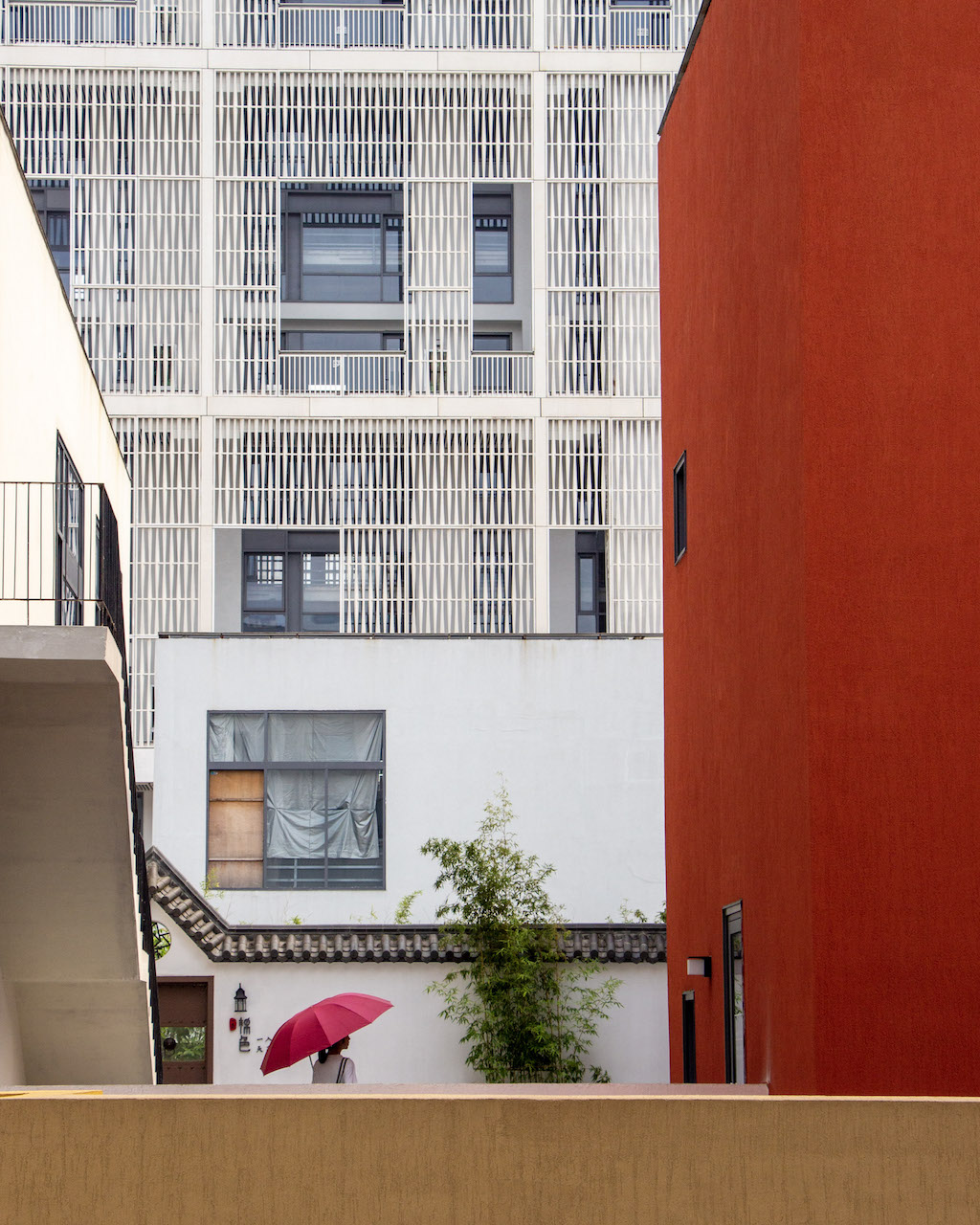
OCT-LOFT is another example of Shenzhen’s early citizen-centred approaches to architecture. Located in Nanshan district, a short drive from downtown Shenzhen, the venue was once a cluster of warehouses sprawled across 150,000m2. As the city evolved into a tech hub and factories began moving further out, it was left abandoned. In 2004, Shenzhen-based architecture firm Urbanus was commissioned by local authorities to repurpose the space. It did so through a reprogramming of the buildings rather than architectural innovation: the factories were refurbished to accommodate art galleries and cafés, as well as design, fashion, animation and architecture studios.
Today, OCT-LOFT hosts over 300 creative ventures, and is a bustling cultural destination. It regularly features free art shows and music festivals, street fairs and talks by various designers. Come during a weekend, and you’ll see plenty of artsy types and young families exploring its leafy lanes. There’s also the T Street Creative Market every other weekend, where local designers sell made-in- Shenzhen goods, from pottery to leather bags and jewellery.
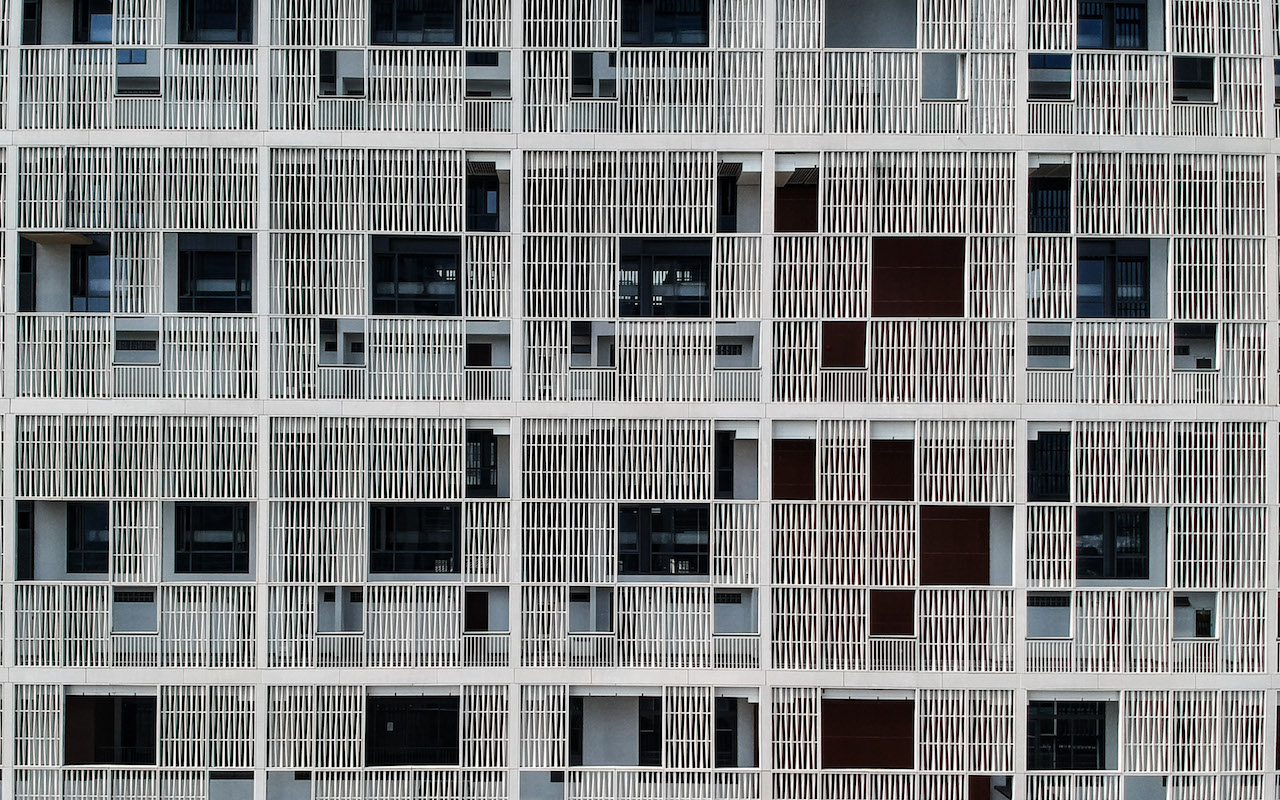
“OCT-LOFT blazed a new path for the concept of sustainable development through urban renewal, not just here but in China at large,” says OCT-LOFT communication assistant Huang Jieyu. “It preserved land by investing it into emerging businesses and institutions. That’s exactly what a modern city does.”
Socially conscious urban planning has also been an integral part of the Quanzhi Science and Technology Innovation Park, completed last year by Shenzhen practice Mozhao Architects in Shajing, a neighbourhood of Bao’an district.
The area, which is a 40-minute drive from downtown, is another former manufacturing cluster turned residential and creative hub. The park features a housing complex and offices for startups, as well as public green spaces, cafés and restaurants.
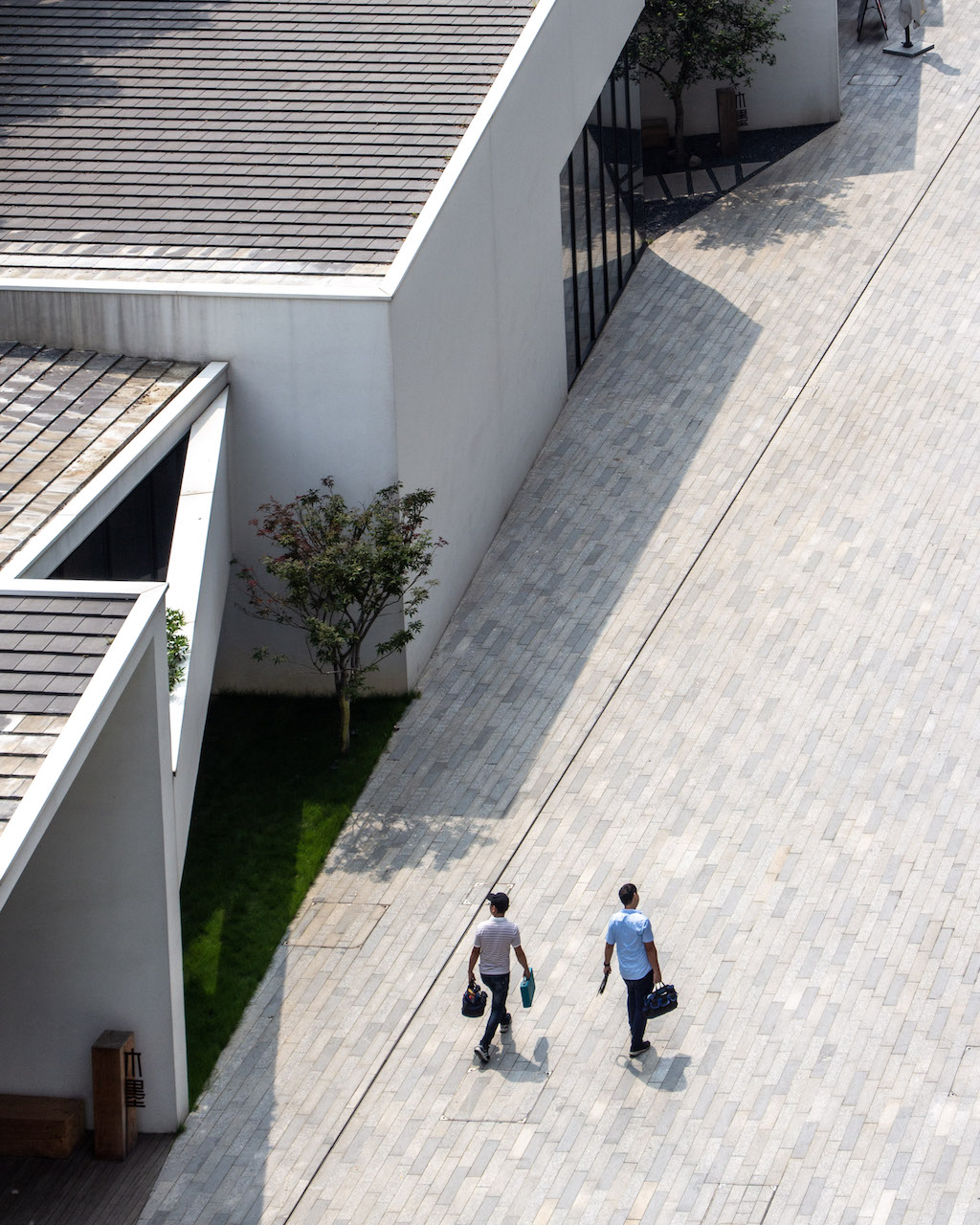
“‘Human scale’ was the major guideline throughout our project,” explains the company’s founder, Zeng Guansheng, a young architect who grew up in Shenzhen and saw its evolution first-hand. Their idea was to create buildings that inhabitants felt connected to, not oppressed or daunted by. To do this, Zeng and his team preferred a waste-minimising modular approach for the whole property, with a series of low-rise buildings partitioned into units that feature sleek interfaces and light-filled windows.
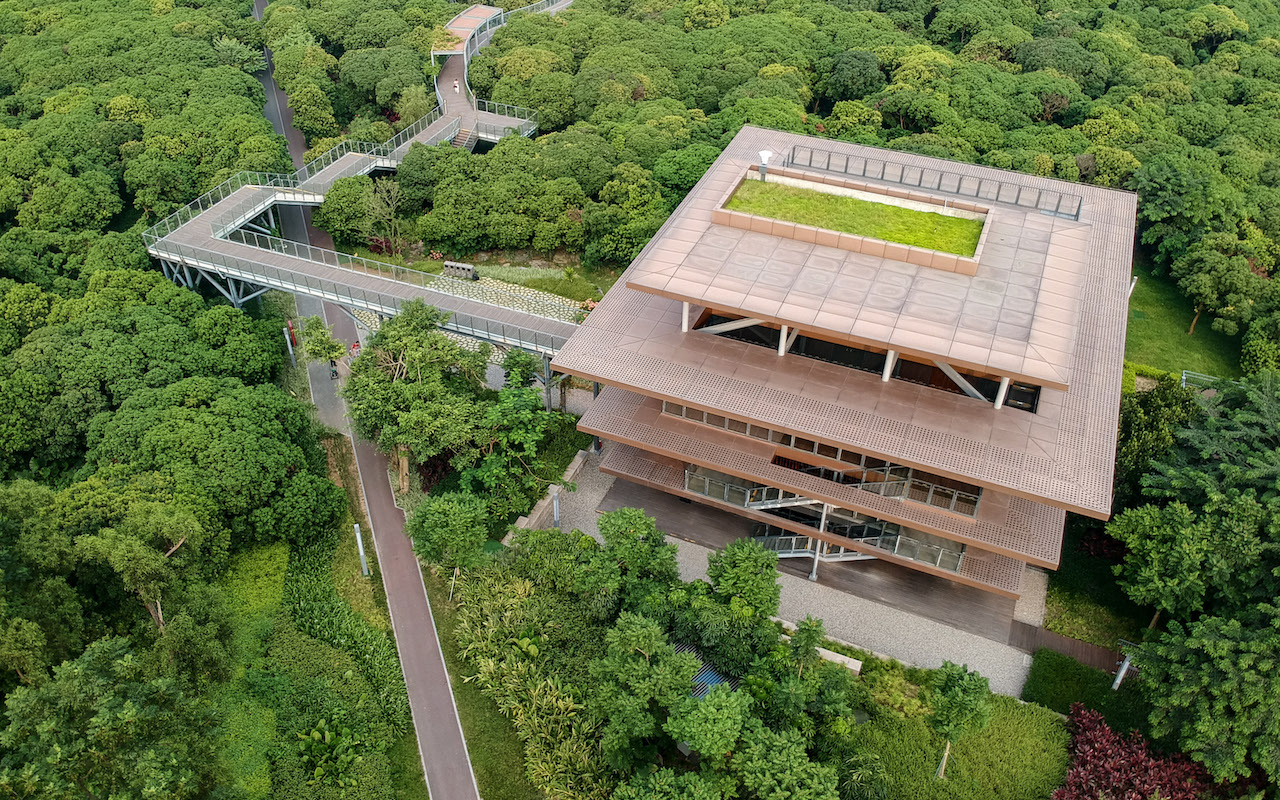
In an effort to increase the cultural offerings and public outdoor areas, the architect also developed shop spaces, the privately-owned Zhi Art Museum and the Living Art Pavilion – a series of six concrete blocks with tenants that include a tea house and an independent furniture boutique.
Inspired by the traditional Chinese architecture of the fishing houses that used to be found in this area, the pavilion features sloping roofs and courtyard spaces, modernised by fragmented diagonal lines, raw concrete beams and full-height windows that look out to rows of trees. Another spot, the outdoor Planting Terrace and Experience Pavilion, was designed to be a public recreational space – a large wooden rooftop dotted by verdant planters.
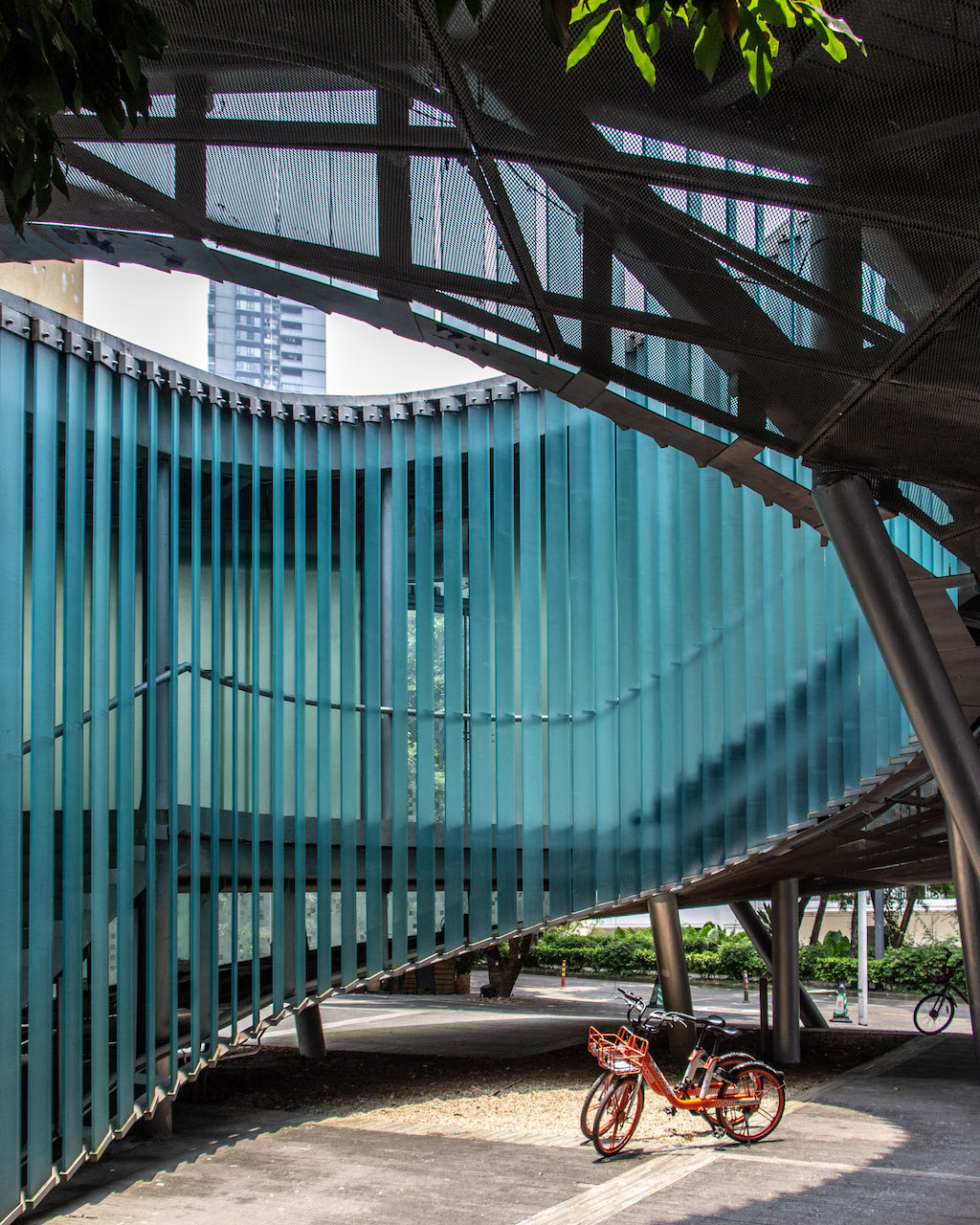
“Shenzhen’s architecture is very practical,” Zeng explains. “City planners have a no-nonsense approach, which explains the growing attention given to initiatives that are eco, smart, sustainable. We don’t want to impress with crazy-looking buildings. We want to develop projects that can have a long-term positive impact for the surrounding environment and the people that live and work in them.”
A glance at other recent architectural undertakings confirms Zeng’s words. The Sea World Culture and Arts Center, completed in 2017 by Japanese firm Maki and Associates, is a quietly stunning, gleaming white complex inspired by its unique geographical location.
Sitting on the waterfront of the Shekou Peninsula, in Nanshan district, it consists of a podium and a pavilion with three cantilevered spaces offering three different views: the sea to the south, the adjacent park surrounding it and the mountains to the north. A dramatic landscaped stairway wraps around the cantilevers, allowing visitors to climb up to a rooftop plaza and down towards the sea.
It’s no surprise then that Design Society, the first overseas outpost of London’s Victoria and Albert Museum, has made this charismatic space its home – as has an array of galleries, museums and shops, all centred around the arts.
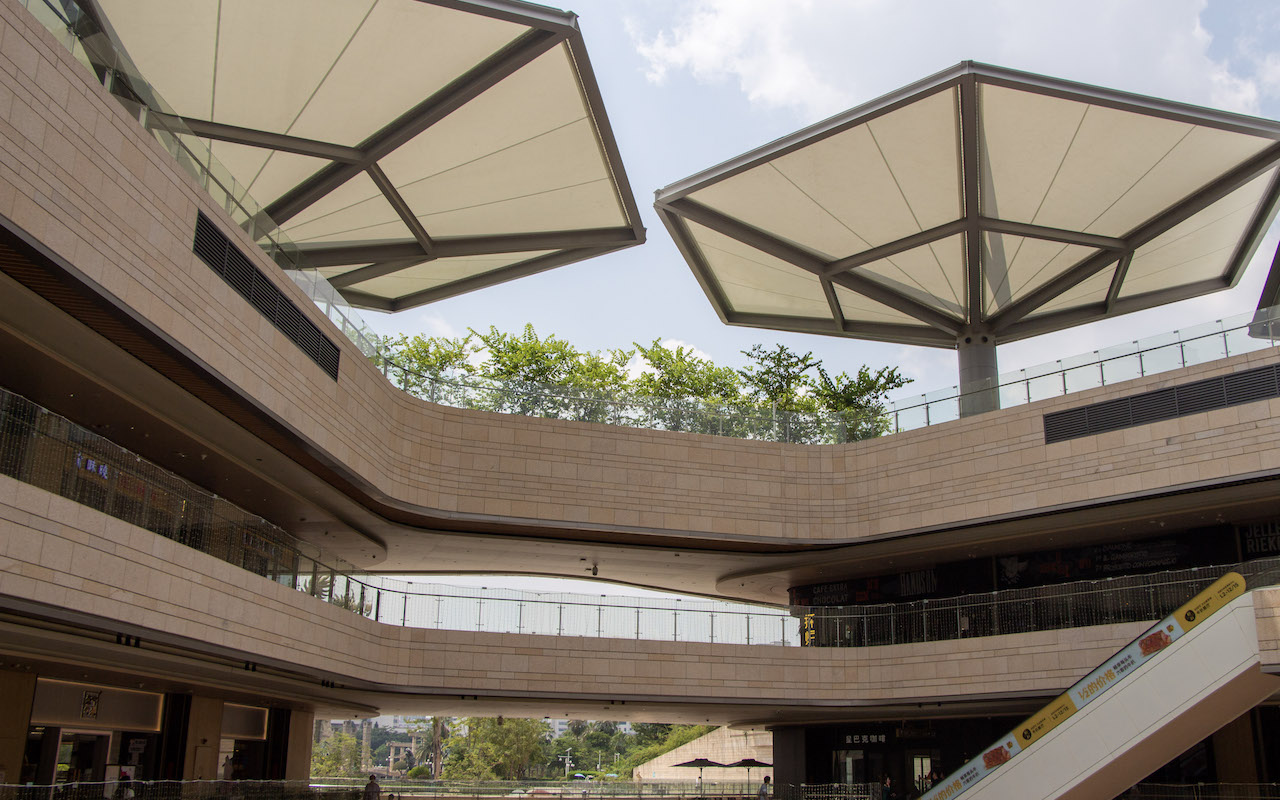
Shen Ye Upperhills, a 2017 upmarket development in Futian’s CBD, has created an equally seamless connection to its surroundings. The two shimmering towers that make up the development – where you’ll find shops, restaurants, an IMAX theatre and a MUJI HOTEL – boast full-height windows to give visitors the impression of having nothing between them and the area’s two parks.
A large elevated pedestrian park and two pedestrian bridges that span roadways are also part of the complex, forming a continuous green tapestry that intersects with the city at the site’s centre. It’s a remarkable example of integrating urban public spaces with the surrounding environment.
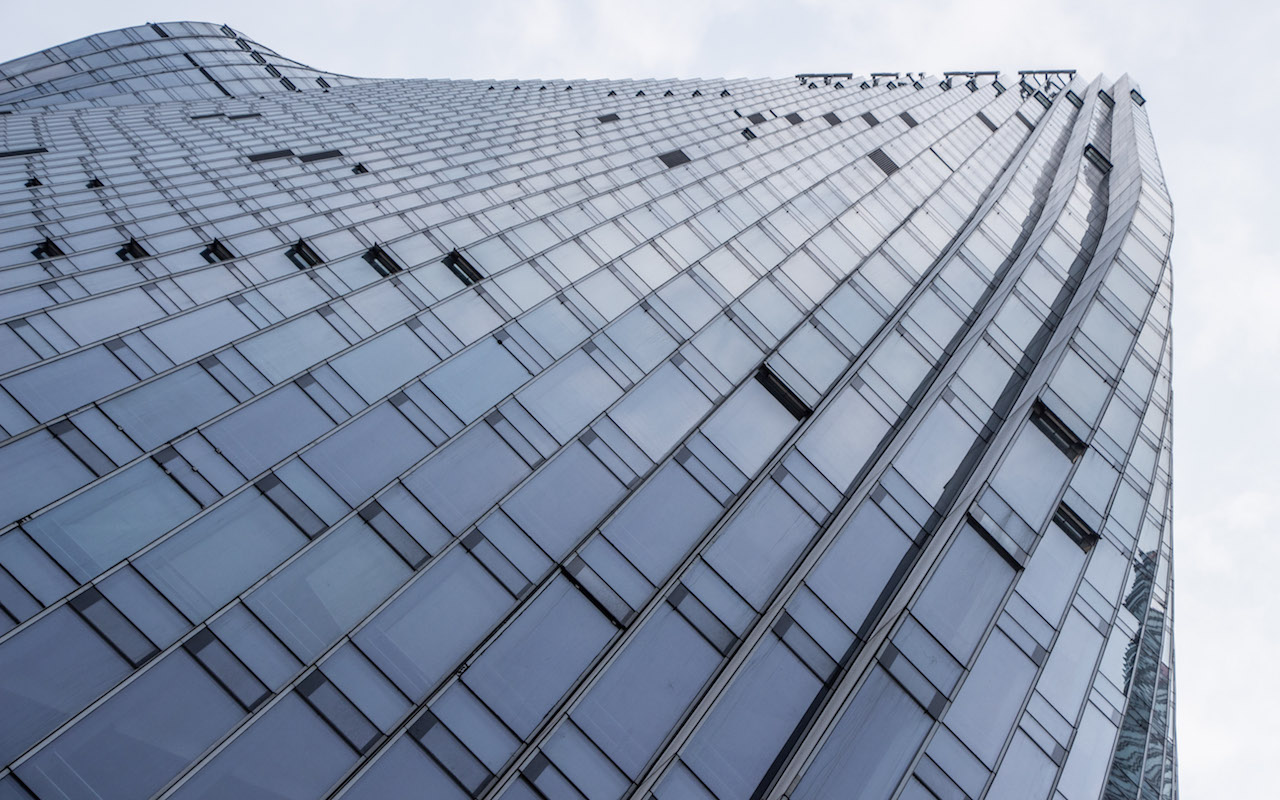
“Good architecture creates a harmonious relationship with its surroundings and offers people a sense of place,” says Li Shao, project manager of Upperhills for American practice SOM, which designed the project. “Working on this development, we strived to address both aspects in ways that would fit with Shenzhen’s vision of its future.”
Like Mozhao’s founder Zeng, Li believes that vision to be resolutely human-centred. “Shenzhen wants to build a great human habitat,” Li says. “It’s a very uplifting approach to urbanism.”
More than planners and architects, Li credits the city’s residents for this philosophy. “Shenzhen is uniquely positioned in China, not just because it’s new but because it’s an immigrant city. People here are from everywhere. They are young – it’s the youngest population in the country – [and] open-minded. They are forward-looking. That’s the ideal condition to practise exciting architecture today.”
In the Pipeline…
Shenzhen Bay Headquarters City, a highly-anticipated waterfront district, is set to become the new city centre. The masterplan, designed by Scandinavian firm Henning Larsen, features sleek commercial facilities alongside cultural venues by the water and at the top of the district’s tallest towers, to form a “skyline of art”. The best part is, there will be no cars in sight – vehicles will be diverted underground in a series of tunnels and car parks to make the street level fully pedestrian.
Xili Sports and Cultural Centre, designed by Dutch firm MVRDV and China’s Zhubo Architecture Design, is slated to open in Nanshan district by the end of 2019 as a sports, leisure and culture centre with a humanistic approach. That translates to open zones like public gardens and green roofs accessible all year round, and community-driven events and initiatives. For an added green touch, a leafy pedestrian bridge will link the massive building to the Chaguang metro station.
Fisherman’s Wharf, in the seaside area of Shekou, is undergoing a major urban renewal with a project led by Germany’s KSP Jürgen Engel Architekten. The new space will feature residential and commercial buildings and a public plaza with façades highlighted by winter gardens and bay windows, ensuring cool air circulation in summer and a pleasant ambient temperature in winter. A hilly landscape will sit beneath the complex, weaving into a 15km-long promenade along the bay.
SEE ALSO: 5 farms in Singapore to escape the urban jungle
This article was originally published in the September 2019 issue of Silkwinds magazine
The post Shenzhen’s amazing attempts at urban renewal and sustainability appeared first on SilverKris.
from SilverKris
No comments:
Post a Comment